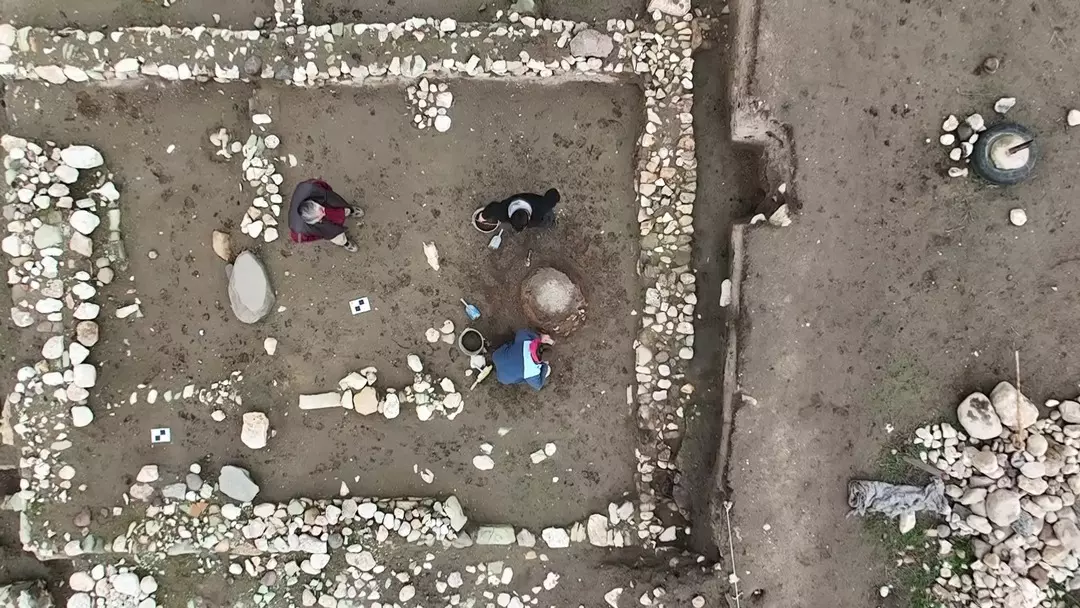by the archaeologist editor group
The early Byzantine church of Saint George in Madaba, Jordan, contains a floor mosaic that is known as the Madaba Map or Madaba Mosaic Map. The oldest surviving original geographic representation of the Holy Land, particularly Jerusalem, can be seen on a portion of the Middle Eastern map known as the Madaba Map. It's from the sixth century AD. As a new Greek Orthodox church was being built on the site of an older one, the mosaic was uncovered in 1884. Jerusalem's Patriarch Nicodemus I was alerted, but no investigation was done until 1896. Many sections of the mosaic map suffered damage over the years as a result of fires, construction work on the new church, and moisture-related issues.
In December 1964, the Volkswagen Foundation gave the Deutscher Verein für die Erforschung Palästinas ("German Society for the exploration of Palestine") 90,000 DM to save the mosaic. In 1965, the archaeologists Heinz Cüppers and Herbert Donner undertook the restoration and conservation of the remaining parts of the mosaic.
The Saint George church in Madaba's apse houses the floor mosaic. In contrast to current maps, which face north, this one faces east toward the altar, so that the locations on the map correspond to the true compass directions. From Lebanon in the north to the Nile Delta in the south and from the Mediterranean Sea in the west to the Eastern Desert, a region is shown on the mosaic map.
A lion (almost rendered unrecognizably by the insertion of random tesserae during an iconoclastic period) hunting a gazelle in the Moab desert, palm-ringed Jericho, Bethlehem, and other biblical-Christian sites are among its other features. It also shows the Dead Sea with two fishing boats, a variety of bridges connecting the banks of the Jordan, and fish swimming in the river and receding from the Dead Sea.
The map may partially have served to facilitate pilgrims' orientation in the Holy Land. All landscape units are labelled with explanations in Greek. The mosaic's references to the tribes of Israel, toponymy, as well as its use of quotations of biblical passages, indicate that the artist who laid out the mosaic used as his primary source the Onomasticon of Eusebius (4th-century CE). A combination of folding perspective and aerial view depicts about 150 towns and villages, all of them labelled.
The largest and most detailed element of the topographic depiction is Jerusalem (Greek: ΙΕΡΟΥΣΑΛΉΜ]), at the centre of the map. The mosaic clearly shows a number of significant structures in the Old City of Jerusalem: the Damascus Gate, the Lions' Gate, the Golden Gate, the Zion Gate, the Church of the Holy Sepulchre, the New Church of the Theotokos, the Tower of David and the Cardo Maximus. On Jerusalem's southwest side is shown Acel Dama (lit. "field of blood"), from Christian liturgy.
The recognisable depiction of the urban topography makes the mosaic a key source on Byzantine Jerusalem. Also unique are the detailed depictions of cities such as Neapolis, Askalon, Gaza, Pelusium and Charachmoba, all of them nearly detailed enough to be described as street maps.
Other designated sites include: Nicopolis (Greek: ΝΙΚΟΠΟΛΙΣ); Beth Zachar[ias] (Greek: ΒΕΘΖΑΧΑΡ[ΊΟΥ]); Bethlehem (Greek: ΒΗΘΛΕΕΜ); Socho (Greek: Σωχω), now Kh. Shuweikah (southwest of Hebron); Beth Annaba (Greek: ΒΕΤΟΑΝΝΑΒΑ); Saphitha (Greek: CΑΦΙΘΑ); Jericho (Greek: Ίεριχω); Modi'im (Greek: ΜΩΔΕΕΙΜ); Lydda (Greek: ΛΩΔΗ); Bethoron (Greek: Βεθωρων); Gibeon (Greek: ΓΑΒΑΩΝ); Rama (Greek: ΡΑΜΑ); Coreae (Greek: ΚΟΡΕΟΥΣ); Maresha (Greek: ΜΟΡΑΣΘΙ); Azotos Paralos (Ashdod-Coast) (Greek: ΑΖΩΤΟΣΠΑΡΑΛΣ); The Great Plain (Greek: ΡΟΣΔΑΝ), literally meaning, "The Tribe of Dan"; Jamnia (Greek: ΊΑΒΝΗΛΗΚΑΙΊΑΜΝΙΑ) (Lit. "Jabneel, which is also Jamnia"), among other sites.













